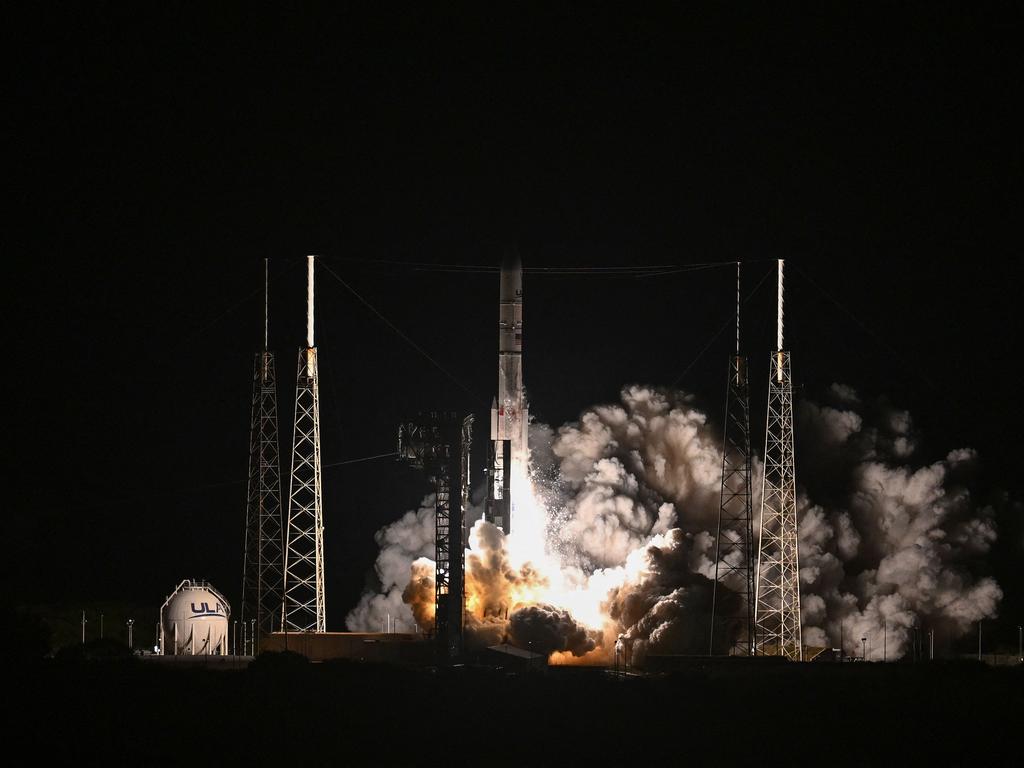NASA finally lifts lid off asteroid secrets after months of trying
Technicians have at last been able to prise open a capsule carrying a sample of dust from Bennu, which took seven months and $US1bn to return to Earth.

A $US1 billion ($1.52bn) NASA mission to collect dust from a distant asteroid has met a key objective: scientists have finally managed, after four months of effort, to get the lid off the sample jar.
The endeavour began in 2016 when a rocket blasted off from Cape Canaveral to send a research probe towards Bennu, a 4.6 billion-year-old asteroid that is classed as “potentially hazardous” because it has one in 1750 chance of crashing into Earth in the next 300 years.
In 2018, the Osiris-Rex probe made its rendezvous. It then spent two years studying Bennu, which measures about 500m across, searching for a suitable spot to gather a sample.
In 2020 it brushed by the asteroid for a matter of seconds – long enough to gather a few ounces of material before embarking on a 322 million-km journey back to Earth.
Last September, as it zipped past our world at nearly 45,062km/h, Osiris-Rex dropped off its canister of asteroid dust, which fell through the Earth’s atmosphere by parachute. The sample touched down in the Utah desert, completing a seven-year odyssey – only for NASA scientists at the Johnson Space Center in Houston to discover that they could not unscrew part of the container.
The work was complicated by the need to avoid contaminating the sample, which means isolating it from Earth’s atmosphere, as well as the discovery of “bonus” asteroid material that had accumulated on its surface.
However, NASA has now said that it is “overjoyed” to have removed two stuck fasteners, a task that required new tools to be fashioned from surgical, non-magnetic stainless steel.
“It’s open! It’s open!” Nasa’s planetary science division said on social media.
The goal had been to collect 60g of asteroid material but NASA soon discovered additional dust covering the outside of the canister.

Researchers have already performed an initial analysis of that bonus material, collecting images from a scanning electron microscope, infra-red measurements, X-ray diffraction, and chemical element analysis. X-ray computed tomography was also used to produce a 3D computer model of one of the particles.
This early work has provided evidence of “abundant carbon and water”, NASA said. It is possible that asteroids similar to Bennu crashed into the Earth when it was relatively young, bringing water with them. They also found magnetite, a mineral that can act as a catalyst in organic chemical reactions.
Bill Nelson, the NASA administrator, said: “The Osiris-Rex sample is the biggest carbon-rich asteroid sample ever delivered to Earth and will help scientists investigate the origins of life on our own planet for generations to come.
“Almost everything we do at NASA seeks to answer questions about who we are and where we come from. NASA missions like Osiris-Rex will improve our understanding of asteroids that could threaten Earth while giving us a glimpse into what lies beyond. The sample has made it back to Earth, but there is still so much science to come – science like we’ve never seen before.”
The spacecraft is now heading to another asteroid, known as Apophis.
Roughly 300m wide, it sparked concern in the early 2000s when astronomers suggested it was on course to collide with Earth in 2029.
Those fears have dissipated, though Apophis is still expected to come within 32,000km of our planet – less than one-tenth of the distance between Earth and the Moon.
Osiris-Rex is the first US spacecraft to return samples from an asteroid, after two successful Japanese missions.
The Times






To join the conversation, please log in. Don't have an account? Register
Join the conversation, you are commenting as Logout